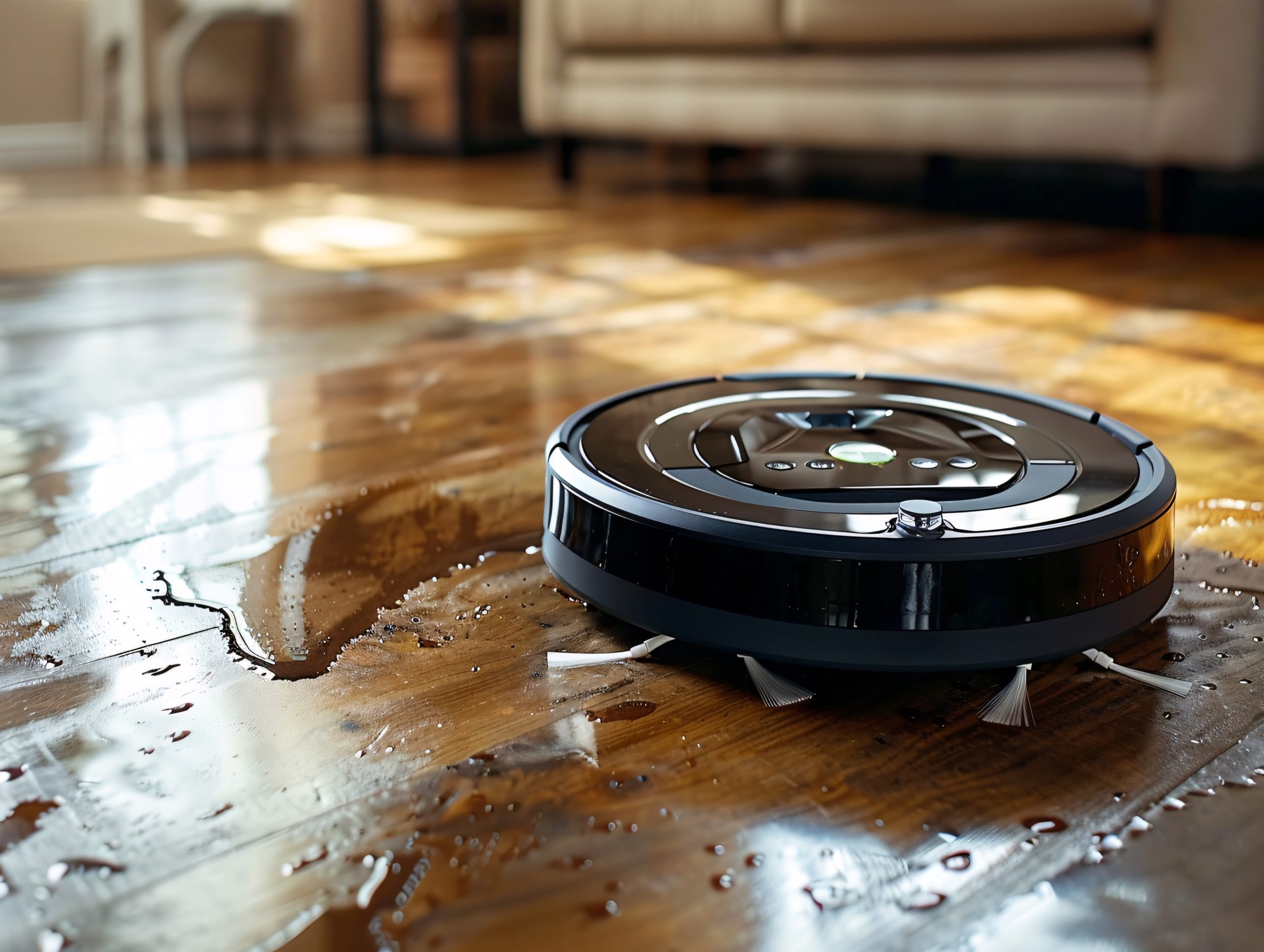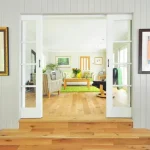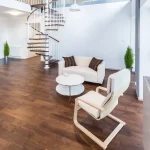
Water Damage and Hardwood Floors: Prevention and Restoration
Water damage is one of the most common threats to hardwood floors. Whether it’s from a plumbing leak, spilled drinks, or excessive humidity, water can cause serious issues, including warping, cupping, and mold growth. For homeowners in Norwalk, Stamford, Greenwich, and surrounding areas, understanding how to prevent and restore water damage is key to preserving your hardwood floors. In this guide, we’ll explore the causes of water damage, prevention tips, and steps to restore your floors after a water-related incident.
How Water Damages Hardwood Floors
Hardwood is a natural, porous material that absorbs water, making it particularly vulnerable to water damage. Here’s how water can affect your hardwood floors:
1. Cupping
- Cupping occurs when the edges of a wood plank are higher than the center, creating a “cupped” shape. This happens when moisture accumulates beneath the floor, causing the bottom of the planks to swell.
2. Warping
- Warping is a more severe form of water damage, causing the planks to bend or twist. This is often the result of prolonged exposure to water, such as flooding or standing water left on the surface.
3. Discoloration and Staining
- Water stains can cause discoloration, turning the wood gray, white, or even black in severe cases. This is common in homes with frequent spills or leaks that are not promptly addressed.
4. Mold and Mildew Growth
- Excess moisture can lead to mold and mildew growth, which can not only damage the wood but also pose serious health risks. This is particularly concerning in humid areas like Greenwich or Norwalk, where moisture levels tend to be higher.
How to Prevent Water Damage
Preventing water damage is crucial for maintaining the integrity and beauty of your hardwood floors. Here are some effective prevention tips:
1. Use Rugs and Mats in High-Risk Areas
- Place water-absorbent mats near entryways, sinks, and other high-risk areas to catch spills and moisture before it reaches the floor. This is especially important in coastal homes in Westport or Stamford, where wet shoes can track in moisture.
2. Maintain Proper Humidity Levels
- Humidity levels should be kept between 30-50% to prevent moisture from affecting your hardwood floors. Use a dehumidifier in the summer and a humidifier in the winter to maintain optimal humidity.
- This is particularly important in homes around Darien or Fairfield, where seasonal humidity fluctuations can impact your floors.
3. Fix Leaks Immediately
- Promptly address any plumbing leaks, whether it’s a dripping faucet, a leaking refrigerator, or a burst pipe. Even small leaks can cause significant damage over time if left unattended.
4. Seal Gaps and Cracks
- Gaps and cracks in the floor can allow water to seep in, causing damage over time. Regularly inspect your floors for gaps, especially in high-traffic areas, and apply wood filler as needed to prevent water penetration.
5. Apply a Water-Resistant Finish
- Applying a water-resistant finish, such as polyurethane, can provide an extra layer of protection against moisture. Reapply the finish every few years to maintain its effectiveness, especially in busy households in Greenwich or Stamford.
How to Restore Water-Damaged Hardwood Floors
If your hardwood floors have already suffered from water damage, it’s essential to act quickly to minimize further issues. Here’s a step-by-step guide to restoring water-damaged hardwood floors:
Step 1: Dry the Area
- Remove excess water using a wet vacuum, mops, or towels.
- Use fans, dehumidifiers, and open windows to dry out the affected area as quickly as possible.
- If the water damage is extensive, consider renting industrial-grade dehumidifiers or contacting a professional restoration company.
Step 2: Inspect the Damage
Once the floor is dry, inspect the damage to determine the next steps:
- Check for signs of cupping, warping, or discoloration.
- If the damage is minor (e.g., surface stains or slight cupping), you may be able to fix it yourself with sanding and refinishing.
- For more severe damage (e.g., warping or extensive mold growth), it’s best to contact a professional restoration service like Hardwood Floors LLC in Norwalk.
Step 3: Sand and Refinish
For minor water damage, sanding and refinishing can often restore the floor’s appearance:
- Use a drum sander to sand down the affected area, starting with coarse sandpaper (36-grit) and moving to finer grits (60-grit, then 100-grit).
- Once the area is sanded, apply a matching wood stain and a water-resistant finish to seal the surface.
If your home in Fairfield County has extensive damage, consider refinishing the entire floor to achieve a consistent look.
Step 4: Replace Severely Damaged Planks
In cases where the water damage is too severe to be repaired through sanding and refinishing, you may need to replace the affected planks:
- Carefully remove the damaged planks using a circular saw and chisel.
- Install new planks, ensuring they match the existing wood type, color, and finish.
- Once the new planks are in place, sand and refinish the entire area to achieve a seamless look.
Replacing planks can be a complex task, especially in older homes in Stamford or Greenwich, where the wood may have aged over time. Professional services like Hardwood Floors LLC can handle the replacement and ensure the best results.
Step 5: Address Mold and Mildew
If you notice mold or mildew growth, it’s essential to address it immediately:
- Use a mixture of water and white vinegar to clean the affected area, or use a commercial mold cleaner.
- For extensive mold growth, contact a mold remediation professional to ensure your home remains safe and mold-free.
Why Choose Hardwood Floors LLC for Water Damage Restoration?
At Hardwood Floors LLC, based in Norwalk, CT, we specialize in water damage prevention and restoration for hardwood floors. Serving homeowners in Stamford, Greenwich, Westport, Darien, and other surrounding areas, our team offers comprehensive solutions to restore your floors to their original beauty.
Our Services Include:
- Water damage assessment and repair
- Sanding, refinishing, and sealing
- Plank replacement for severely damaged areas
Contact Us:
- Location: Norwalk, CT
- Phone: (203) 913-4209
- Website: www.hardwoodfloorsllc.com
If your hardwood floors have been affected by water damage, don’t wait—contact us today for expert restoration services.
Final Thoughts: Protecting and Restoring Hardwood Floors
Water damage can be devastating to hardwood floors, but with proper prevention and timely restoration, you can maintain the beauty and durability of your flooring. Whether you need help with water damage prevention or full restoration, Hardwood Floors LLC is here to provide professional solutions that fit your needs.
If you’re in Fairfield County and need assistance with water damage restoration, contact Hardwood Floors LLC today for a consultation.





